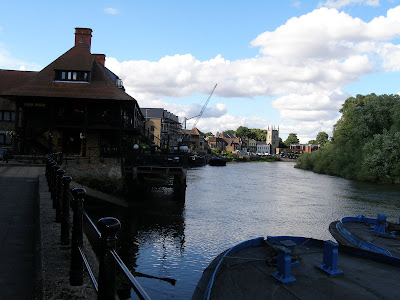
It's Karl's last evening in Richmond before he moves on. We will be following him for a short distance.
I have succeeded in finding one inn that Karl Moritz really did see (but did not stay in), and he would recognise it even today. The Roebuck on Richmond Hill has held that name at least since 1729 - probably longer - and the building looks much the same as it did then.
Here we are, watching the sun set over the famous "view from Richmond Hill". Karl waits patiently while I tweak my camera and get a well balanced exposure as the night draws in.
Over our drink, Karl and I chat about Britain and Europe and the unending conflicts of interest, the ongoing conflict between the "Celtic fringe" and the English, "globalisation" as unstoppable English capitalism seems to be accidentally encircling the world, the amazing openness of Britain and problems of old tradition in modern society, corruption in politics, the stresses caused by industrialisation and the move to the cities, climatic catastrophes and floods, the loss of the American colonies, but the immense value of the growing Indian trade, and the growing importance of education and science, and the importance of the modern financial system that is making London so important to world trade.
Obviously, very little has changed since 1782, and Karl and I could communicate easily.

































